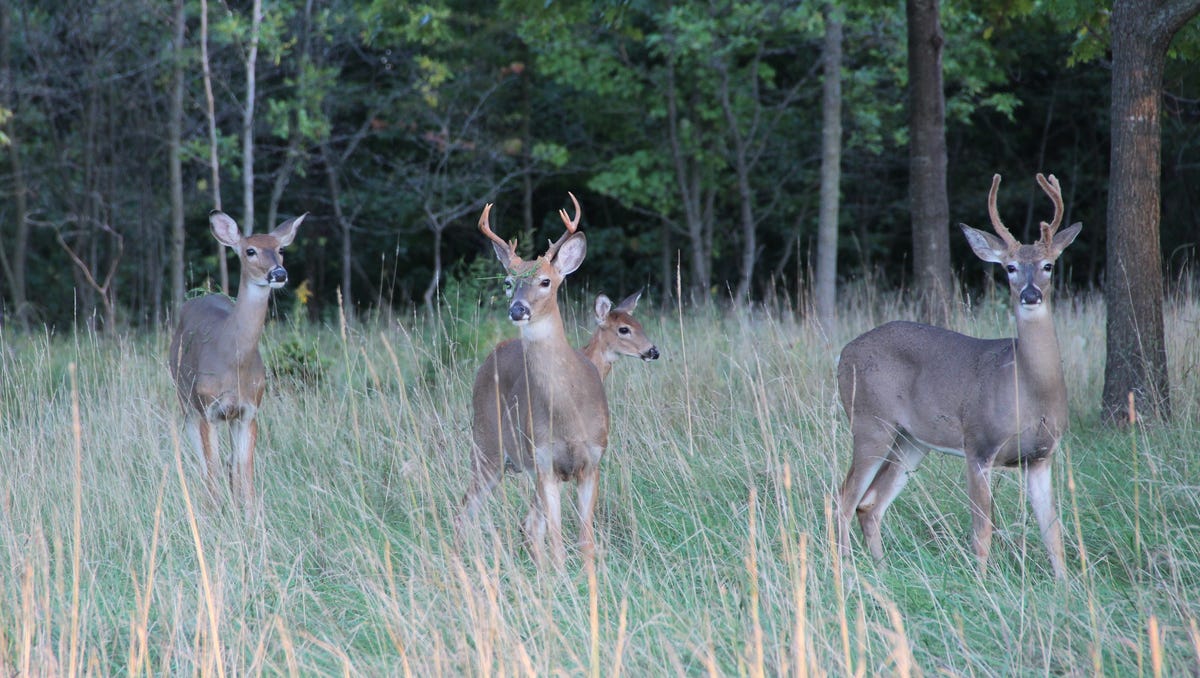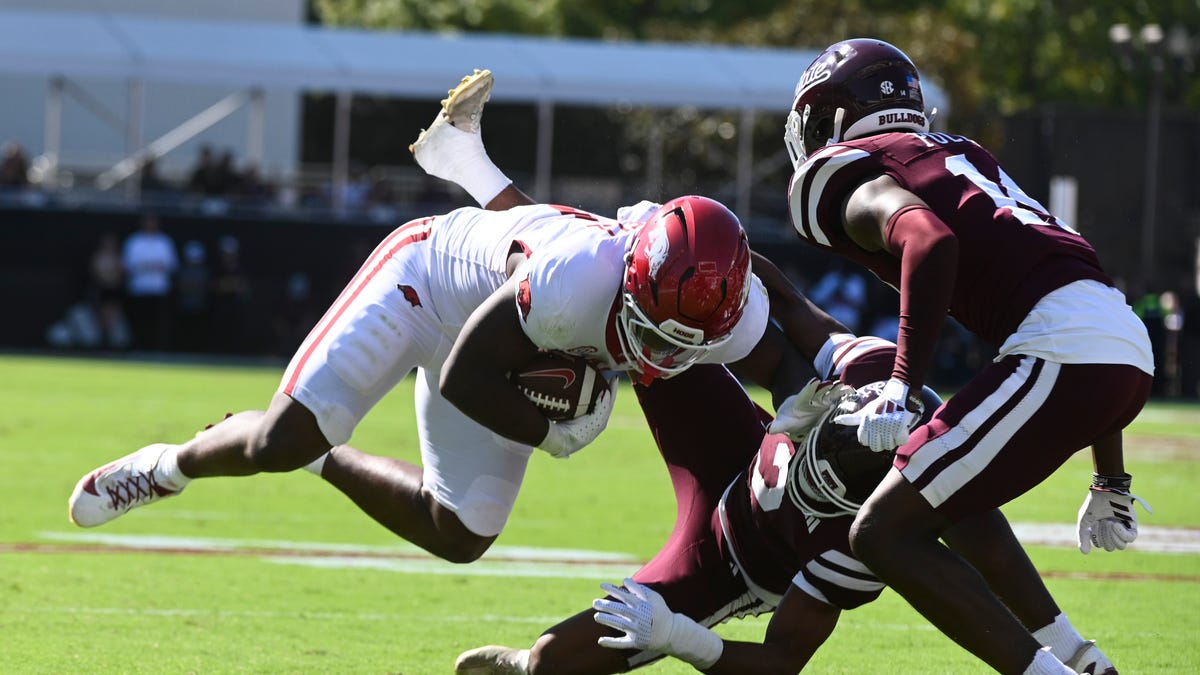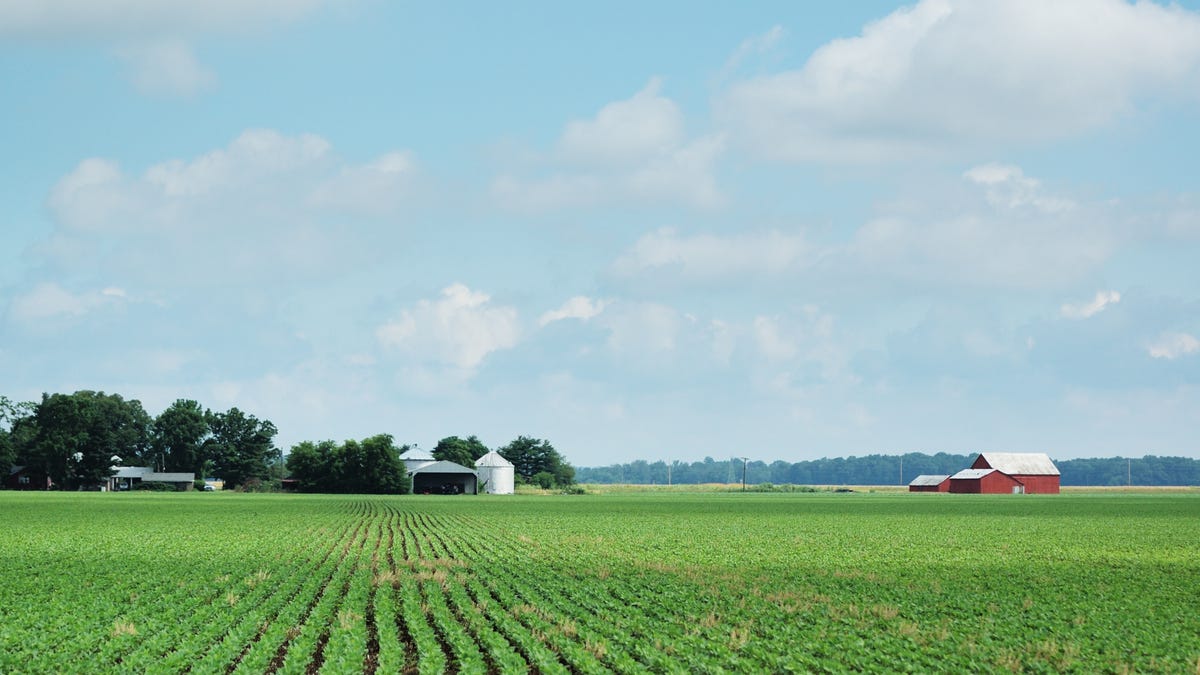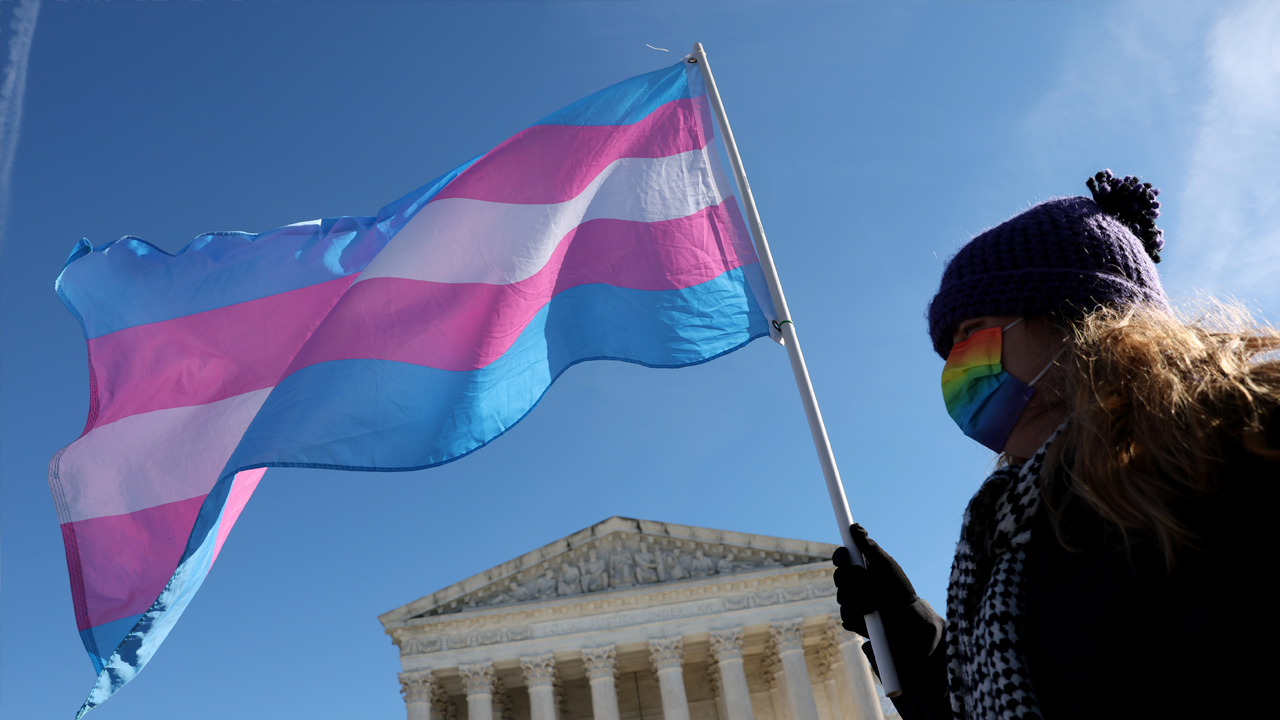Wisconsin
Chronic wasting disease continued to spread and increase in prevalence in 2024

Chronic wasting disease continued to spread and increase in prevalence in 2024, according to DNR data.
Twenty-three years after the first detections were reported, chronic wasting disease continues to spread geographically and increase in prevalence in Wisconsin’s white-tailed deer herd, according to data from the Department of Natural Resources.
In the last three weeks the DNR announced CWD findings in wild deer in two new counties, Chippewa and Menominee. The agency now classifies 64 of the state’s 72 counties as “CWD-affected.”
And 10.4% of the 16,321 deer tested in 2024 were CWD-positive, the highest statewide rate since surveillance for the fatal deer disease began in 1999.
Although the CWD testing is conducted on deer submitted voluntarily by hunters and not part of a controlled study, wildlife health experts say such an increasing prevalence rate is to be expected with the disease.
When assessed by county, the highest rate in 2024 was in Richland County, where 33% of 1,301 samples were CWD-positive, followed by Sauk (32% in 815 samples), Iowa (26% in 664) and Dane (18% in 851).
Chronic wasting disease is a prion disease that affects white-tailed deer, mule deer, elk, moose and reindeer, according to the Centers for Disease Control. It has been found in the United States, Canada, Norway, Finland and Sweden. Imported cases have also been reported in South Korea.
First recognized in a Colorado animal research facility in the late 1960s, CWD has now been identified in 32 states, according to the CDC.
The disease has not been documented to cause illness in humans or livestock. However health experts including at the CDC recommend meat from CWD-positive deer not be consumed by humans.
Wisconsin was the first state east of the Mississippi River to have CWD-positive deer. The first CWD detections in Wisconsin were reported in 2002 both in wild deer near Mt. Horeb and in farmed deer at a facility in Portage County.
After a period of aggressive tactics such as the use of sharp-shooters in an effort to eradicate the disease in wild deer, the DNR adopted a strategy of testing and monitoring.
Hunters in Wisconsin can submit deer for CWD testing by the state; the process is voluntary and no fee is charged.
Over the last 25 years the DNR has documented a continued geographical spread of the disease, underscored by the announcements in the last month of CWD-positive wild deer in two additional counties.
The disease can spread through infected saliva, feces, blood or in contaminated soil and other substrates, according to the CDC. There is no known treatment or vaccine.
It may take more than a year before an infected animal develops symptoms, which can include drastic weight loss (wasting), stumbling, listlessness and other neurologic symptoms, according to the CDC.
It’s expected the disease will eventually be found in all 72 Wisconsin counties.
The disease has been linked to population level declines in mule deer in a Wyoming herd. It’s not yet known whether it will lead to a reduction in the deer population in Wisconsin whitetails. A DNR study on deer, CWD and predators in southern Wisconsin is expected to release results this year.
The 10.4% CWD-positive deer tested statewide in 2024 compares to: In 2023, 17,343 deer tested and 1,587 (9.2%) CWD-positive; 2022, 17,207 and 1,492 (8.7%); 2021, 17,149 and 1,327 (7.7%); 2020, 18,917 and 1,578 (8.3%); 2019, 19,368 and 1,338 (6.9%); and 2018, 17,216 and 1,064 (6.2%).
For additional perspective, the percent positive CWD detections were 5.3% in 2013. 1.5% in 2008, 0.8% in 2003 and 0.1% in samples pooled from 1999 through 2002, the first years of CWD testing.
The CWD-positive deer in Menominee County was a 2-year-old buck taken by a hunter. The finding won’t change regulations in Menominee County, which were under a baiting and feeding ban put in place by Menominee Indian Reservation.
It also won’t affect the three-year baiting and feeding bans already in place due to CWD-positive deer reported in adjacent Oconto and Shawano counties.
The CWD-positive deer in Chippewa County was a hunter-harvested, 1-year-old buck. The finding will renew a three-year baiting and feeding ban in Chippewa County and a two-year ban in Barron County.
The DNR and the Chippewa County Deer Advisory Council are hosting a public meeting at 6:30 p.m. Feb. 6 to provide information about CWD in Wisconsin and local testing efforts in the county.
State law requires the DNR enact a three-year baiting and feeding ban in counties where CWD has been detected, as well as a two-year ban in adjoining counties within 10 miles of a CWD detection. If additional CWD cases are found during the lifetime of a baiting and feeding ban, the ban will renew for an additional two or three years.
Baiting or feeding deer encourages them to congregate unnaturally around a shared food source where infected deer can spread CWD through direct contact with healthy deer or indirectly by leaving behind infectious prions in their saliva, blood, feces and urine. More information regarding baiting and feeding regulations is available on the DNR’s Baiting and Feeding webpage.
More general information about CWD can be found on the DNR’s CWD webpage.
Officials with the Wisconsin Department of Agriculture Trade and Consumer Protection did not supply information last week after repeated requests for 2024 CWD data on deer farms and shooting preserves in the state.
In data last updated Sept. 25, 2023, DATCP’s webpage shows 46 deer farms with a CWD-positive animal since 2001. The agency says 24 of those facilities have been depopulated.

Wisconsin
Wisconsin Lottery Powerball, Pick 3 results for Oct. 29, 2025
Manuel Franco claims his $768 million Powerball jackpot
Manuel Franco, 24, of West Allis was revealed Tuesday as the winner of the $768.4 million Powerball jackpot.
Mark Hoffman, Milwaukee Journal Sentinel
The Wisconsin Lottery offers multiple draw games for those aiming to win big. Here’s a look at Oct. 29, 2025, results for each game:
Winning Powerball numbers from Oct. 29 drawing
04-24-49-60-65, Powerball: 01, Power Play: 2
Check Powerball payouts and previous drawings here.
Winning Pick 3 numbers from Oct. 29 drawing
Midday: 9-3-5
Evening: 4-4-2
Check Pick 3 payouts and previous drawings here.
Winning Pick 4 numbers from Oct. 29 drawing
Midday: 5-2-6-4
Evening: 9-4-1-5
Check Pick 4 payouts and previous drawings here.
Winning All or Nothing numbers from Oct. 29 drawing
Midday: 02-05-06-07-11-12-14-16-19-21-22
Evening: 01-02-03-04-05-06-08-09-12-17-20
Check All or Nothing payouts and previous drawings here.
Winning Badger 5 numbers from Oct. 29 drawing
01-06-16-26-31
Check Badger 5 payouts and previous drawings here.
Winning SuperCash numbers from Oct. 29 drawing
01-20-24-26-28-35, Doubler: N
Check SuperCash payouts and previous drawings here.
Winning Megabucks numbers from Oct. 29 drawing
08-10-20-30-47-49
Check Megabucks payouts and previous drawings here.
Feeling lucky? Explore the latest lottery news & results
Are you a winner? Here’s how to claim your lottery prize
- Prizes up to $599: Can be claimed at any Wisconsin Lottery retailer.
- Prizes from $600 to $199,999: Can be claimed in person at a Lottery Office. By mail, send the signed ticket and a completed claim form available on the Wisconsin Lottery claim page to: Prizes, PO Box 777 Madison, WI 53774.
- Prizes of $200,000 or more: Must be claimed in person at the Madison Lottery office. Call the Lottery office prior to your visit: 608-261-4916.
Can Wisconsin lottery winners remain anonymous?
No, according to the Wisconsin Lottery. Due to the state’s open records laws, the lottery must, upon request, release the name and city of the winner. Other information about the winner is released only with the winner’s consent.
When are the Wisconsin Lottery drawings held?
- Powerball: 9:59 p.m. CT on Monday, Wednesday, and Saturday.
- Mega Millions: 10:00 p.m. CT on Tuesday and Friday.
- Super Cash: 9:00 p.m. CT daily.
- Pick 3 (Day): 1:30 p.m. CT daily.
- Pick 3 (Evening): 9:00 p.m. CT daily.
- Pick 4 (Day): 1:30 p.m. CT daily.
- Pick 4 (Evening): 9:00 p.m. CT daily.
- All or Nothing (Day): 1:30 p.m. CT daily.
- All or Nothing (Evening): 9 p.m. CT daily.
- Megabucks: 9:00 p.m. CT on Wednesday and Saturday.
- Badger 5: 9:00 p.m. CT daily.
That lucky feeling: Peek at the past week’s winning numbers.
Feeling lucky? WI man wins $768 million Powerball jackpot **
WI Lottery history: Top 10 Powerball and Mega Million jackpots
This results page was generated automatically using information from TinBu and a template written and reviewed by a Wisconsin editor. You can send feedback using this form.
Wisconsin
Badgers football losses go beyond field and into Wisconsin’s economy, UW report says
Ripple effects could be felt in other UW athletic programs
The 2025 Badger football season is one fans already want to forget − but the negative economic impact could be felt well beyond the final game on Nov. 29.
If the team’s poor performance continues, it could reduce the program’s profit by $20 million annually, according to a new report from the Center for Research on the Wisconsin Economy, housed at University of Wisconsin-Madison
The ripple effects can be felt in other university athletic programs subsidized by the football program, and could impact student applications to the university, alumni donations, and research output, according to the report − titled “The Economic Impact of Badger Football’s Declining Performance.”
Beyond the financial blow to the campus, the report estimates the city of Madison could could lose up to $160 million, and the state could lose up to $280 million “stemming from reduced attendance, game day spending, tourism and reputational value.”
The UW Athletic Department disputes the findings of the report.
“Wisconsin Athletics respects the work and research of our world-renowned academic partners, along with their passion for the sports that represent our institution,” a department statement said.
“Although we do not believe that this study portrays a complete and accurate representation of the economic factors around the football program, we all share a common interest in its successful future.
“We welcome the opportunity to collaborate with the Center for Research on the Wisconsin Economy on any future works on this topic,” according to the statement.
Badger football is profitable
In 2023, the football team had revenue of $106. 7 million and expenses of $42.3 million, with the program earning more than $64 million, according to the U.S. Department of Education’s Equity in Athletics Data Analysis cited in the report.
In 2024, Badger football had $107.4 million in revenue according to its NCAA membership filing, and had expenses of $49.6 million − posting a profit of $57.8 million. The Badgers men’s basketball program earned a $7.3 million profit that year.
If the winning percentage falls from nearly 80%, as it was during the 2017 to 2019 seasons, to 50%, that could mean “Badger Football’s annual profit could drop by about $20 million,” the report reads.
The team this season so far has a 2-6 record with four games remaining in November.
Is it Luke Fickell’s fault?
Short answer: not in the beginning.
The report says the program’s profit didn’t decline during 2022 and 2023 despite the 14-12 regular season record. That was during Luke Fickell’s first two seasons as head coach.
“This is probably because there was a lot of excitement” about Fickell’s hiring, the report states.
Fans recently have been chanting “fire Fickell” at home games. Wisconsin Athletic Director Chris McIntosh addressed fans concerns in an Oct. 20 letter.
It said the football season has “fallen well short of our standards” and added the department is committed “to elevating the investment into our football program to position us to compete at the highest level.”
Financial impact is already being felt
This year the program is on pace to have the lowest attendance in more than 30 years with a 51,980 average scanned attendance during the first four home games. That’s according to data obtained via an open records request and analyzed by the Milwaukee Journal Sentinel.
But fans have been signaling their disappointment before this season.
According to the research center report, “Badgers sold 38,082 season tickets for general seating areas in 2025, down from 42,197 in 2024 and 41,206 in 2023.”
Football helps subsidize other programs, generates donations
The Athletic Department’s total profit was less than $11 million in 2023, including the football program’s $64 million profit.
“This suggests that the department’s other programs and operations are subsidized heavily by the football team,” the report states.
The report cites research that shows “when a male graduate former team wins its conference championship, his donations for general purposes increase by about 7% and his donations to the athletic program increase by about the same percentage.
“Moreover, if a male alumnus’s team won its conference championship during his senior year, his subsequent giving to the athletic program is about 8% a year higher.”
The Badgers last won the Big Ten football title in 2012.
“If the poor performance continues, its impact on alumni donations and engagement is likely to diminish,” the report reads.
Local economic impact of athletic program
College sports programs affect communities and states as fans go to games, restaurants, and bars, buy merchandise, and pay for hotel rooms.
The report compared the UW athletic program’s impact on Madison and Wisconsin with the University of MinnesotaTwin Cities program on Minneapolis area and Minnesota. Both football teams had similar performances in 2022 and 2023.
It showed the Badgers’ impact on Madison contributed to 3,360 jobs and $462 million of economic output.
The Gophers’ impact on the Twin Cities contributed to 1,152 jobs and $298 million of economic output.
Statewide, the Badger athletic program contributed to 5,640 jobs and $757 million of economic impact in Wisconsin. In Minnesota, the Gophers contributed to $474 million of economic impact.
The report says the Twin Cities population is larger than Madison’s population − making the latter “likely more sensitive to Badger Football’s performance.”
NIL and program investment
UW can revitalize the program by investing in facilities, recruiting budgets, NIL (name, image and likeness) deals for athletes, and competitive compensation for players and coaches, the report said.
The report estimates the Badgers NIL collective funding in 2023 and 2024 was $8.9 million. The highest spent in the conference was Ohio State at $20.2 million, it said.
NIL deals aren’t public information and the estimate is based on methodology from nil-ncaa.com/big10. .
Spending more money on the football program “could help reverse the team’s declining performance,” the report said.
“Enhanced facilities can attract top transfers and recruits, while better coaching and talent ensure the return on these assets are maximized,” it said. “Strategic, dual-focused investments are essential to rebuild competitiveness and mitigate the economic risks estimated above.”
Milwaukee Journal Sentinel reporter John Steppe contributed to this report.
Wisconsin
Three former Wisconsin Badgers make Utah Jazz G League training camp roster

Recent Wisconsin basketball graduates John Tonje, Steven Crowl and Max Klesmit officially made the Salt Lake City Stars’ training camp roster on Monday. The Stars, the G League affiliate of the Utah Jazz, began their training camp on Monday. Their first game of the 2025-26 season is scheduled for Tuesday, Nov. 11.
Tonje’s inclusion on the roster is no surprise. Following an All-American 2024-25 season leading the Badgers, the Jazz selected him with the No. 53 overall pick in the 2025 NBA draft. He then officially signed a two-way deal with the organization in late August. He’s one of three two-way players on the Stars’ roster, along with Elijah Harkless and Oscar Tshiebwe.
Crowl, meanwhile, converted a Summer League roster spot into this training camp invitation. He should have an inside track at G League action, given his fast-growing experience within the organization.
Finally, this opportunity is Max Klesmit’s first at the NBA or G League level. He’ll likely need strong play throughout training camp to earn a spot on the team’s regular-season roster.
Contact/Follow @TheBadgersWire on X (formerly Twitter) and like our page on Facebook to follow ongoing coverage of Wisconsin Badgers news, notes and opinion
-

 New York7 days ago
New York7 days agoVideo: How Mamdani Has Evolved in the Mayoral Race
-

 World1 week ago
World1 week agoIsrael continues deadly Gaza truce breaches as US seeks to strengthen deal
-

 News1 week ago
News1 week agoVideo: Federal Agents Detain Man During New York City Raid
-

 News1 week ago
News1 week agoBooks about race and gender to be returned to school libraries on some military bases
-

 Technology1 week ago
Technology1 week agoAI girlfriend apps leak millions of private chats
-

 Politics1 week ago
Politics1 week agoTrump admin on pace to shatter deportation record by end of first year: ‘Just the beginning’
-

 News1 week ago
News1 week agoTrump news at a glance: president can send national guard to Portland, for now
-

 Business1 week ago
Business1 week agoUnionized baristas want Olympics to drop Starbucks as its ‘official coffee partner’


















